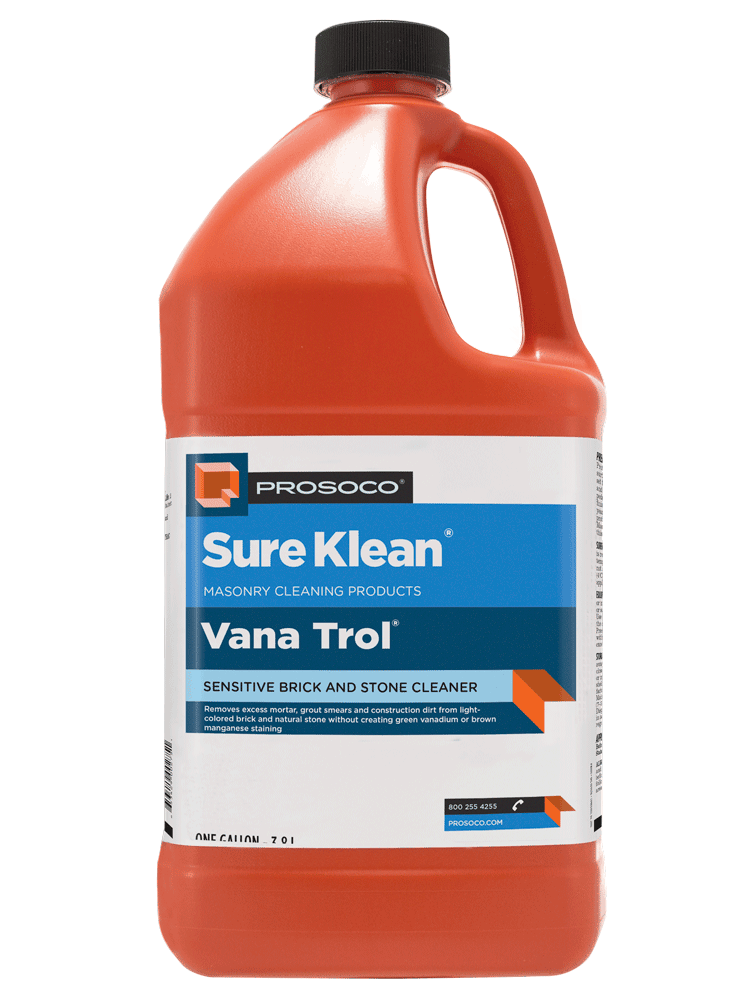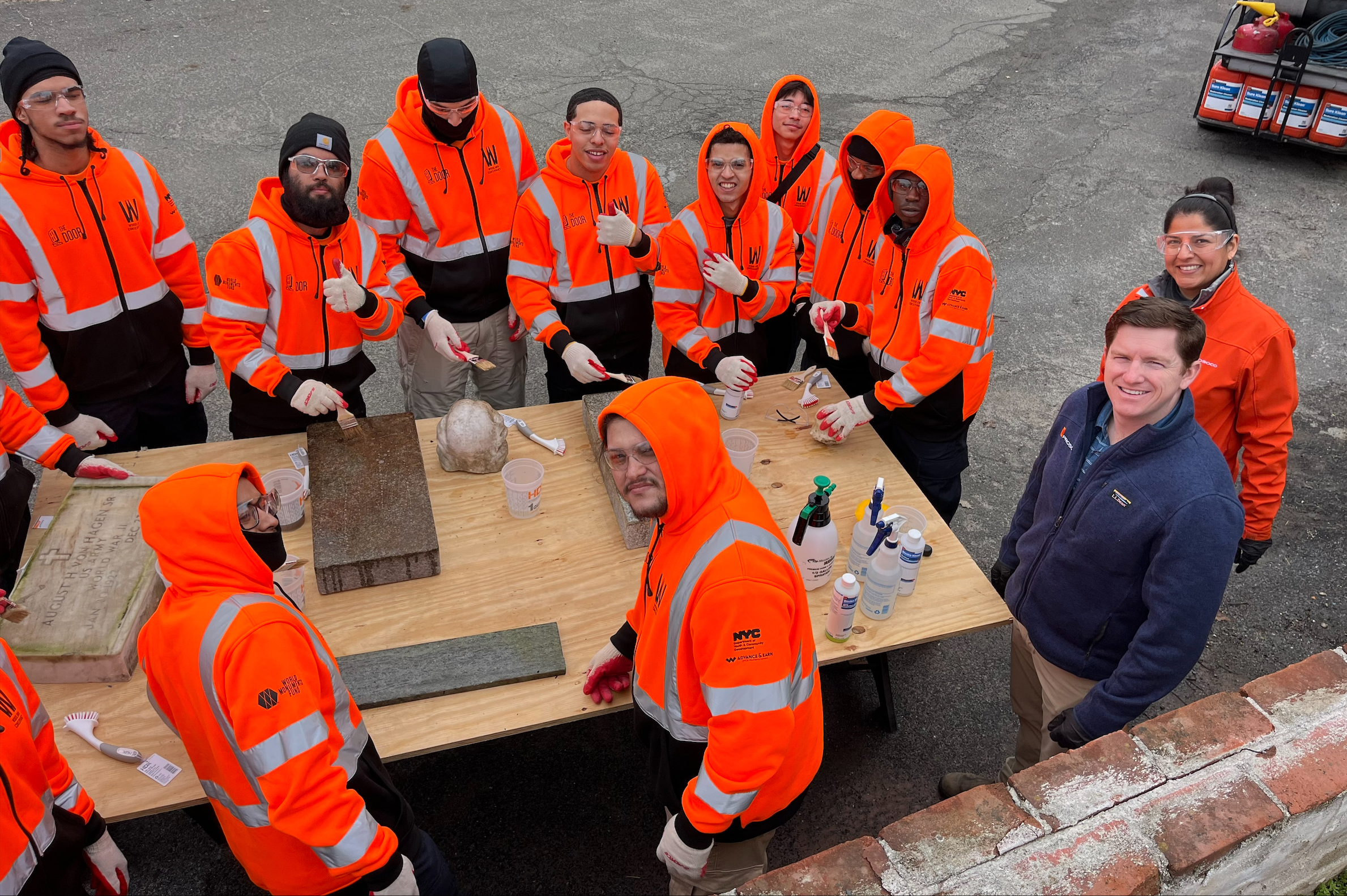Looking for quick answers? Here's what to know:
You might not be familiar with the word “efflorescence,” but if you’re a home or building owner, it’s important to get to know this issue because it is one of the most common masonry stains that can occur on masonry restoration and historic restoration projects. Efflorescence describes crystalline salt deposits that appear on porous building surfaces. The word finds its origins in French, meaning “to flower,” describing the “bloom” of salt at the surface, and is sometimes referred to as “whiskers.” Though the translation might sound beautiful, efflorescence on basement walls or your stone is anything but beautiful or cute, and could indicate serious problems.
Salt efflorescence requires three elements: salt, water, and porous materials. Efflorescence on brick is most common, but it can occur on any porous surface, such as stucco, concrete, block, or even wood.
What is efflorescence?
Efflorescence starts with salt. Salts are found in the ground and in construction materials such as brick, mortar, cement, lime, sand, clay, admixtures, and backing materials.
Typical efflorescence is white but can vary in color, including yellow or brown, depending on the salt and accompanying chemicals. Common salts include calcium sulfate, sodium sulfate, potassium sulfate, vanadyl sulfate, calcium carbonate, sodium carbonate, potassium carbonate, and manganese oxide.
Water is the second ingredient. During construction, water used in cement and mortar mixtures can start the process, dissolving salts in building materials it contacts. Water also comes from rain, snow, sprinkler systems, cracks, gaps and the ground. Water dissolves salts and moves them to the surface of brick walls or cement foundations. As water evaporates, the salts are left behind, which you see as efflorescence.


Preventing efflorescence pre- and post-construction
To address efflorescence on brick before or after construction, prevention is more effective than removal and will save time and money in the future. On new construction, preventing efflorescence boils down to choosing materials wisely and isolating building materials from salt and water sources. Here are a few tips to prevent efflorescence during construction.
- Isolating storage
Store masonry materials off the ground and cover them with waterproof sheeting. This will prevent them from absorbing excess water or salts.
- Architecture adjustments
Ensure building plans include eaves, overhangs, and flashing to reduce the chance water has of entering the wall from above.
- Landscaping adjustments
Ensure landscape plans include adequate runoff areas, moving water away from masonry. Water sprinkler systems should be set up in a way to not direct water at the building or wall.
- Capillary break
Use vapor barrier sheeting between masonry construction and the ground. This will prevent both water entry and salt absorption.
- Consolidated grout
Mechanical vibration and dense mortar joints can remove voids from the grout and decrease porosity, slowing the travel of water and salts between bricks, blocks, or stones.
- Grout admixtures
Certain grout admixtures can be used to improve grout flow, reduce water content, and reduce porosity.
- Surface sealer (water repellent)
As a final step after mortar tooling and final clean-down, application of a hydrophobic sealer prevents external absorption of water from rain and snow. Checkout our number one selling water repellent for brick, Siloxane PD.
- Proper drainage
When installing pavers, ensure bedding material and grading allow for proper drainage. Permeable geotextiles can prevent salt absorption from the ground.

Get PROSOCO's free
Masonry Stain Identification Guide
Our 29-page guide is chalked full of helpful information on identifying, removing, and preventing the 19 most common stains that occur on masonry buildings.
Even when proper steps are taken to isolate masonry from water and salt sources, it is important to note efflorescence is a perfectly normal by-product of masonry construction because of the salts inherent in the materials themselves. After removing initial efflorescence blooms, they should not return. Efflorescence on pavers will eventually stop on its own after the salts in the pavers have dissipated.
On the other hand, recurring efflorescence may indicate an ongoing problem of water intrusion that needs to be addressed before it causes permanent damage to the structure. Efflorescence can move deeper into the substrate, causing something known as subflorescence. This occurs when salt deposits are left in subsurface cracks and voids, causing spalling. This process is accelerated in freeze-thaw cycles in northern climes.

Removing efflorescence – three strategies
Surface efflorescence on brickwork is unsightly but easily remedied. There are three ways to remove efflorescence from brick, block, concrete, or pavers. The best time for removing efflorescence is when the weather is warm and dry.
1. Stiff brush
On some smooth surfaces, you may be able to use a stiff brush. Because efflorescence is dry and powdery, a brush will easily sweep it away. Wear a dust mask to protect your lungs.
2. Water rinse
On other surfaces, rinsing with a garden sprayer or pressure washer can dissolve efflorescence, allowing it to run off. With a pressure washer, use the widest-angle tip that works without damaging the surface. With the rinsing method, though, the water may bring more salts to the surface as the substrate dries, so re-rinsing or brushing may be necessary.
3. Chemical cleaning
Brushing and pressure-washing may be insufficient on tough salt deposits. An acidic cleaner, such as PROSOCO’s Sure Klean Light Duty Concrete Cleaner, and Sure Klean Vana Trol can dissolve efflorescence more effectively. Muriatic acid is never recommended for use on masonry and mortar because it can stain or burn your masonry, etch mortar joints and cause premature deterioration through water penetration. It’s also impure, unpredictable in strength and labor-intensive.
When considering how to prevent or clean efflorescence on your construction or maintenance project, it’s important to remember that no one solution is right for every project. PROSOCO’s Customer Care team is available to help you find the right product for your specific conditions and circumstances, including stain, substrate and region. You can reach them Monday through Friday, 8 a.m. to 5 p.m., Central Standard Time, at 1-800-255-4255. Visit our Hard Surface Care page to learn more about masonry cleaning products.
![]()









